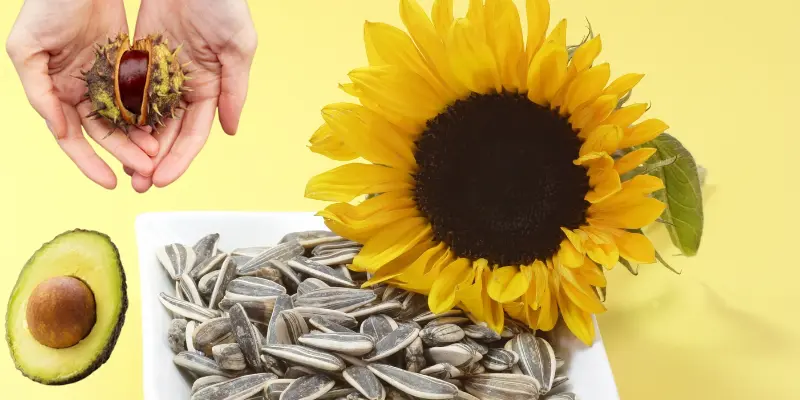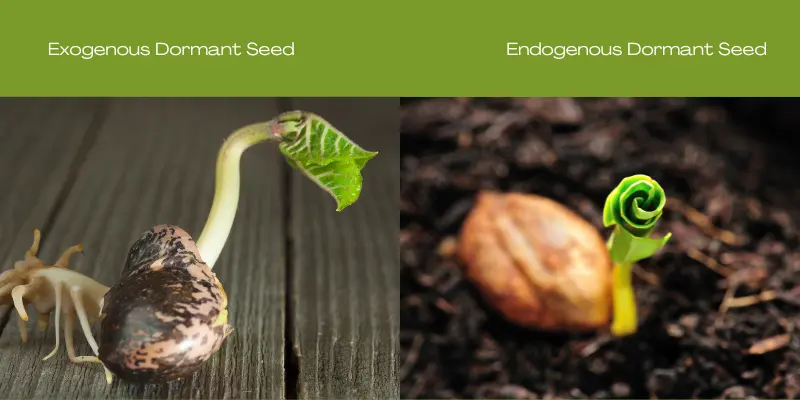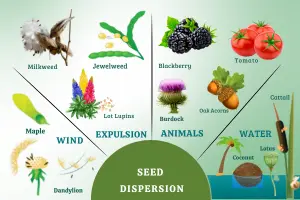What is Seed Dormancy? A Comprehensive Guide
Published: 22 May 2025
Sprout New Beginnings! 🌱
Why do some seeds stay asleep, even when everything around them says “Wake up”? This mystery, known as seed dormancy, is like nature’s built-in alarm clock. It stops seeds from sprouting too soon, waiting for the perfect conditions to grow strong and thrive.
Sheila, a skilled botanist with seven years of experience, dives into this fascinating process. She’ll take you through the ins and outs of what is seed dormancy—its causes, types, and ways to wake seeds up when needed.
Are you curious about how this affects plants and farming? By the end, you’ll know the secrets of seed dormancy and why it matters. Ready to learn? Let’s get started!
What Is Seed Dormancy?
Seed dormancy is a natural pause, stopping seeds from sprouting until conditions are just right for growth. Think of it like a “pause button,” allowing seeds to wait out harsh conditions like cold or drought. This process increases a seed’s chances of survival and successful natural germination.
Why Does Seed Dormancy Occur?❓
- Seed dormancy isn’t just a random pause; it’s nature’s way of ensuring seeds sprout only when survival is most likely.
- Each seed has specific needs, and these conditions create a safeguard, preventing premature growth that could fail.
Let’s explore the factors influencing seed dormancy and their roles in this fascinating process.
Overview of Dormancy Causes🔍
- Seed dormancy results from environmental factors and the seed’s internal readiness.
- These elements act like nature’s lock-and-key system, keeping seeds dormant until ideal conditions are met.
- These factors include temperature, light, water, seed coat characteristics, and chemical inhibitors within the seed.
Key Factors Behind Seed Dormancy
Factors Influencing Seed Dormancy in Plants
| Factors | Role in Seed Dormancy. |
|---|---|
| Temperature | Controls sprouting based on seasonal warmth and cold. |
| Light | Ensures seeds germinate only under optimal light. |
| Water Availability | Activates seeds only with adequate moisture. |
| Seed coat Characteristics | Protects seeds by blocking water and oxygen. |
| Chemical Inhibitors | Delays growth until conditions dissolve inhibitors. |
Each factor acts uniquely, ensuring seeds germinate at the best possible time. For instance, as a botanist, I’ve observed that seeds like wildflowers remain dormant until a series of warm, rainy days arrive, triggering their growth. This strategic timing increases their chances of flourishing and adds to nature’s rhythm.
Types of Seed Dormancy
Seed dormancy comes in various forms, each with unique triggers and advantages. These types help seeds survive until conditions are suitable for successful growth. Below are the main types of dormancy, each with examples and key characteristics.
- Innate Dormancy
- Enforced Dormancy
- Induced Dormancy
1. Innate Dormancy
Seeds with innate dormancy are essentially “programmed” not to sprout right after dispersal, even if conditions seem perfect. This dormancy can be due to factors like immature embryos or thick seed coats, allowing seeds to wait for optimal growing conditions.
Example: Many desert plants possess this dormancy type to avoid sprouting in short-lived rains.
2. Enforced Dormancy
Enforced dormancy occurs when external conditions restrict a seed from germinating, even if it’s ready internally. Think of it like a “gate” that remains shut until enough moisture, light, or oxygen is available.
Example: In wetland plants, enforced dormancy ensures seeds only sprout when water levels are adequate.

3. Induced Dormancy
Induced dormancy happens when seeds take in water but face harsh conditions, stopping them from sprouting immediately. It’s like a “pause button” for seeds, helping them wait until the surroundings are safe.
Example: Forest seeds that hydrate but face cold spells often exhibit induced dormancy, waiting for warmer weather to resume growth.
Categories of Seed Dormancy
Seeds respond to dormancy signals that start from external or internal sources, which helps them choose the best time to sprout and survive. We classify seed dormancy into two main categories based on where it begins:
- Exogenous Dormancy
- Endogenous Dormancy

Description of Seed Dormancy Categories
| Category | Description | Examples |
| Exogenous Dormancy | Dormancy is caused by external factors, like a hard seed coat or environmental conditions, that block water, light, or oxygen from reaching the embryo. | Walnut, Lotus |
| Endogenous Dormancy | Dormancy arises from internal factors within the embryo, such as incomplete development or chemical inhibitors that delay germination until conditions improve. | Apple, Cherry |
How to Break Seed Dormancy: Methods and Techniques
Breaking seed dormancy is essential for successful germination, especially when natural triggers are missing. Here, we explore two types of methods that help seeds overcome dormancy barriers
- Natural Method
- Artificial Method
Natural Methods to Overcome Dormancy
Nature offers several ways to break dormancy, allowing seeds to sprout when conditions are favourable.
- Stratification is a cool and moist treatment that stimulates winter and encourages seeds to germinate in spring. This technique works wonders in my garden, particularly with native wildflowers.
- Leaching: This involves rinsing the seed coat to wash away chemical inhibitors, a simple yet effective method for many seed types.
- Scarification: Natural grinding from factors like passing through animals’ digestive tracts or being weathered by soil helps weaken the hard seed coat, allowing water to penetrate.
To plant a garden is to believe in tomorrow.🌷🌞Audrey Hepburn
Artificial Methods to Break Dormancy
When natural methods aren’t enough, artificial techniques can support germination.
- Hot Water Treatment: A quick dip in hot water softens the seed coat, much like soaking beans before cooking.
- Scarification by Machines: Machines like seed scarifiers chip or file the seed coat, making it porous. This method is beneficial for more challenging seeds.
- Chemical Treatments: Growth regulators and mild acids can trigger germination, acting like a “wake-up call” for dormant seeds.
Importance of Seed Dormancy in Nature
In nature, nothing is perfect, and everything is perfect.🌿✨Alice Walker
- Enables survival in harsh conditions
- Spreads and adapts plant species
- Prevents seeds from sprouting in bad weather
- Maintains continuity of plant populations
- Keeps seeds dormant in the soil as a future reserve
Practical Applications and Relevance of Seed Dormancy
Seed dormancy plays a crucial role in agriculture. It acts like a “natural timer” that ensures crops germinate at the right moment for optimal yield. By controlling dormancy, farmers can align planting schedules with seasonal conditions and improve crop success.
Agricultural Benefits: Managed dormancy helps farmers synchronize sprouting with favourable conditions, like setting an alarm clock to wake up just in time for work.
Crops and Wildflowers: Dormancy management benefits crops like wheat, barley, and wildflowers, allowing them to thrive by avoiding unfavourable conditions and ensuring consistent growth.
| Interesting Facts |
|---|
|
Conclusion
So, guys, it’s time to wrap up. In this article, we’ve covered what is seed dormancy in detail. In my experience, understanding seed dormancy has been invaluable for timing my planting and ensuring healthier plants.
I suggest starting with stratification or scarification if you’re new to dormancy techniques. Give it a try, and feel free to share your results or ask questions below.
Let’s keep growing together!
FAQs
You can learn more about seed dormancy by reading frequently asked questions:
Seed dormancy is triggered by environmental factors, seed coat barriers, or internal chemicals to prevent early sprouting.
You can use a float test (placing seeds in water) or cut open a seed to check for a healthy embryo.
Dormancy helps plants in harsh climates, though some fast-growing crops have minimal dormancy needs.
Yes, Stratification (cooling) or scarification (scratching the seed coat) can help break dormancy.

- Be Respectful
- Stay Relevant
- Stay Positive
- True Feedback
- Encourage Discussion
- Avoid Spamming
- No Fake News
- Don't Copy-Paste
- No Personal Attacks



- Be Respectful
- Stay Relevant
- Stay Positive
- True Feedback
- Encourage Discussion
- Avoid Spamming
- No Fake News
- Don't Copy-Paste
- No Personal Attacks





